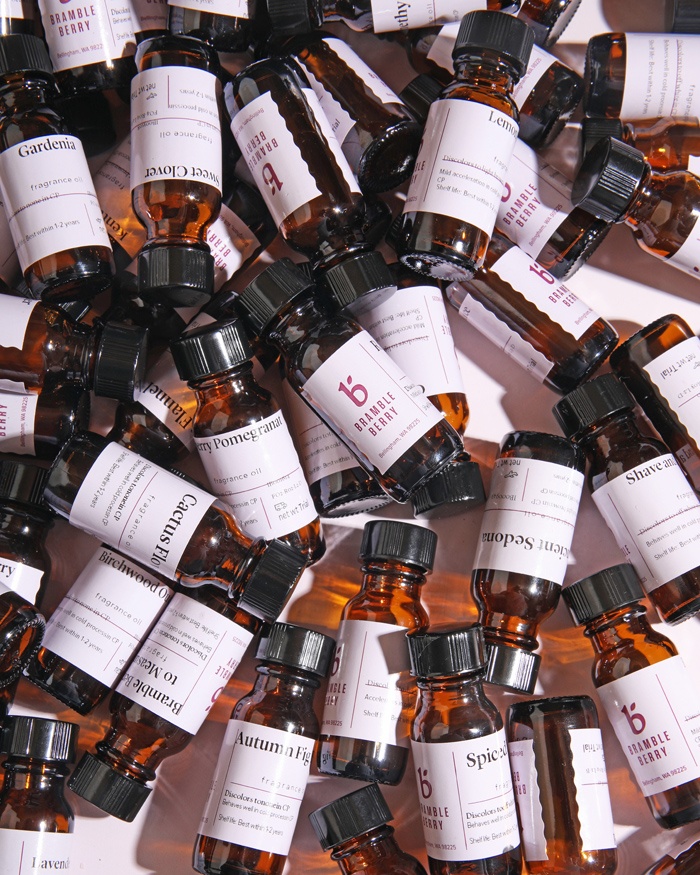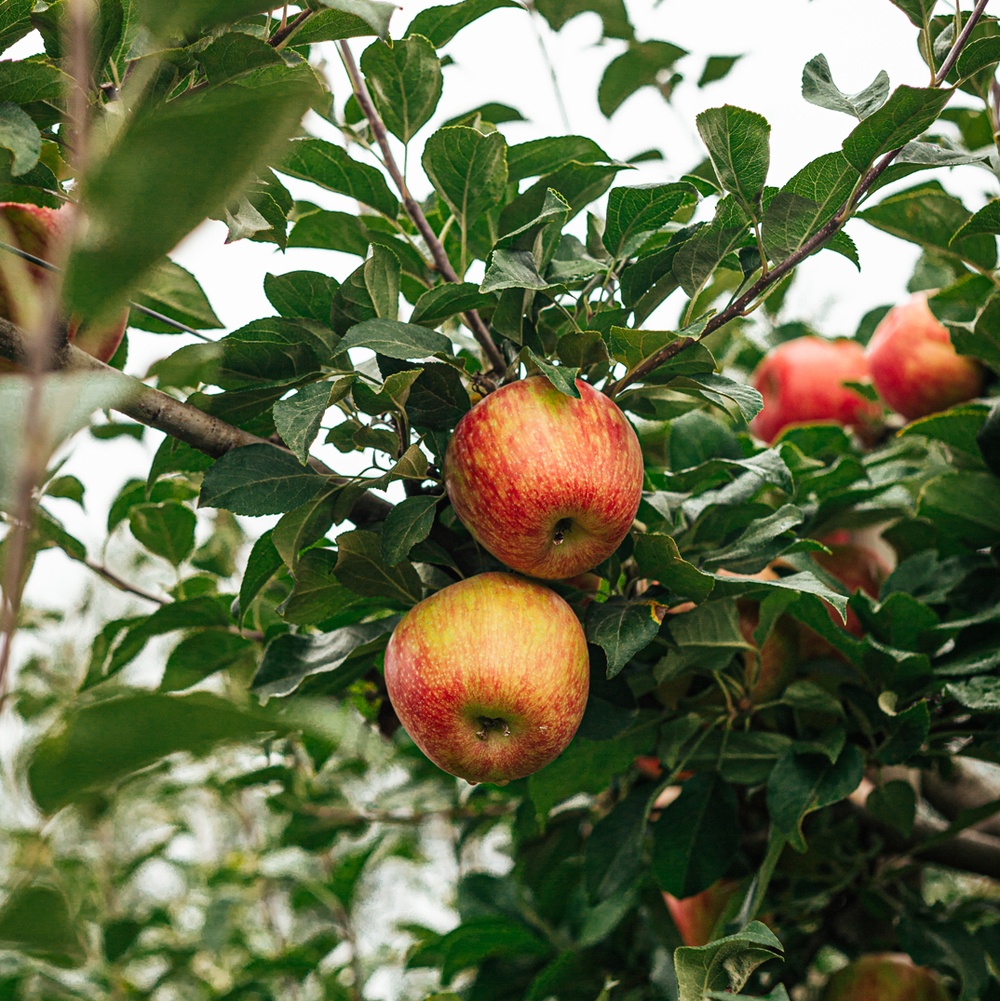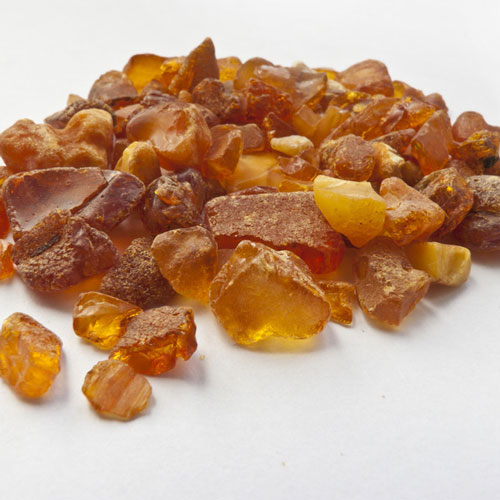One of the wonderful things about making your own soap and bath products is that you can customize the fragrance specifically to your taste. Mixing fragrances can be intimidating, though; fragrances aren’t cheap and you might be afraid of having to throw out a blend that just didn’t work. Here’s some information that will help you experiment with more confidence.

How does fragrance work?
People have been using different kinds of fragrances for around 4,000 years. The ancient Egyptians distilled fragrance from plants and flowers.
When we smell something, molecules of the substance are drawn into the nose and then absorbed into a thin membrane. Information about those molecules are sent to the olfactory bulb in the brain, which then leads to 4 other areas of the brain. The frontal cortex is responsible for our perception of smell, the hippocampus gives us context for the smells in the form of memories, and then the amygdala and hypothalamus add emotional context.
Connecting emotion and memory to our sense of smell has a survival advantage. If we smell a predator, or smell a fruit that has poisoned us in the past, we can recognize those smells as dangerous.
The side effect of this is that our sense of smell has the ability to conjure powerful emotions and memories. That might explain why we love fragrance so much that we’ve been using it since the dawn of civilization.
Fragrance is used in all kinds of products. Perfumes, skincare products, soap, bubble baths, air fresheners, candles, shampoo and conditioner, household cleaners, and more. So we’re exposed to fragrances every day.
Fragrance oils
Fragrance oils are artificial fragrances. They’re composed of aroma compounds, and some fragrance oils can be really complex, with hundreds of aroma compounds. Some of these aroma compounds are extracted from natural plants; linalool can be extracted from lavender, for example. There are a huge number of different fragrance oils. Synthetic fragrances are created to smell like natural scents, or to create scents not found in nature. Fragrance Oils are also created to smell like scents that we can’t create essential oils for, like fruits and some flowers.

Essential oils
Essential oils are extracted from plants or from parts of plants. These oils are used for scent specifically and contain chemical compounds naturally found in those plants, and contain the essence of the plant’s fragrance. Essential Oils are extracted by distillation, solvent extraction, or expression.
Essential oils, in addition to being used to scent products, are also often used for aromatherapy. This is due to their ability to provoke different feelings and memories.
While essential oils are natural, not all of them are safe. Some are poisonous when consumed, or even when absorbed by the skin. Some can cause skin irritation. Learn more about Bramble Berry’s essential oil philosophy in this article.
With both fragrance oils and essential oils, it’s important to know which can be irritating or toxic when creating soap and bath products. We provide this information on the product page for each of our fragrance and essential oils.. Both fragrance oils and essential oils should be diluted before being applied to the skin.
If you’re interested in knowing more about fragrance oils and essential oils, check out our article: Essential Oils vs. Fragrance Oils.
Top, middle, and base notes
When fragrance products, like perfume, are described, you’ll often see the scent broken down into different notes. These notes refer to how the fragrance smells at different times. Fragrance develops once it’s applied, and its scent changes over time. That’s why it’s important to test a fragrance and let it sit before deciding to make a purchase (or a soap!) with that scent.
Top notes
Top notes are also known as head notes or opening notes, and they’re what you smell right after you apply the fragrance. They evaporate quickly, but create your first impression of a fragrance.
Middle notes
Middle notes, or heart notes, come out once the top note has evaporated away. They’re the main body of the fragrance. They last longer than top notes.
Base notes
Base notes are the scent that comes out at the end of the fragrance. They come after the middle notes, and mix with the middle notes. They’re the longest lasting component of the fragrance.
Scent families
Perfumers and other scent experts group different scents into scent families. This means that scents that share certain characteristics are grouped together, and it can act as a guide to help create fragrance blends. The two main categories are fresh scents and warm scents.
Fresh scents
Fresh scents tend to be vibrant, bright, and/or refreshing.The fresh scent category includes the following notes:
- Fresh notes - Water notes, green leaves, citrus, and fruits. Our Fresh Snow Fragrance Oil is a great example of a fresh fragrance.
- Floral notes - fresh flowers, aldehydes and powdery notes, orange blossom and sweet spices. Our Lilac Fragrance Oil is an example of a floral fragrance.
Warm scents
Warm scents tend to be calming and comforting, but they can also be hot and spicy. This category includes amber notes and woody notes.
- Amber notes - Amber, vanilla, incense, resins, patchouli. Our Twilight Tea and Amber Fragrance Oil is a scent with amber notes.
- Woody notes - mossy woods, dry woods, leather, aromatic woods. Our Hickory and Suede Fragrance Oil has notes of wood and leather.

There are places where these categories blend together. Lavender for example can be both woody and fresh. Some spices may be both floral and amber. Sandalwood is woody, but can also fall into the amber category because of its incense smell.
Mixing Scents
All of this information is taken into account when mixing fragrances. There’s a standard ratio for deciding how much of each fragrance you should combine. Typically you use 20% of your top note scent, 30% of your middle note, and 50% of your base note. These notes can (and often are) made with multiple individual scents.
Mixing fragrances is about creativity, so there are no hard and fast rules. There are some guidelines to help you get started, though.
- Woody scents tend to go well with all other families and are often used as base notes.
- Florals and other airy smells tend to be used as top notes. They go well with spicy and woody smells.
- Amber scents pair well with spices and citrus smells.
- Green smells tend to pair well with citrus smells and earthy smells.
So, as an example, if you wanted to capture a forest in spring, you might use water and floral notes in the top, woods and green notes in the middle, and earthy smells for your base note.
Once you’ve blended your fragrance, you want to let it sit for a couple of days. The scent compounds will mix together during this time, and the fragrance will often change as a result.
You can also add just a couple of drops of a bridge note to help these different layers of fragrance blend together. For example, a citrusy top note can use vanilla to blend into woody heart notes.
Testing fragrances
When you’re testing fragrance blends, you’ll want to use a fragrance test strip. These are strips that you can buy that will absorb a drop of fragrance. You then wave the strip under your nose and see if you like the smell.
You should never test undiluted fragrances on your skin. If you’re designing a fragrance for long term wear, like a perfume, you will want to dilute the fragrance with your carrier of choice, usually an oil or perfumer’s alcohol, and then apply to your skin.
Let the fragrance sit to experience all three components; the top notes, middle notes, and base notes.
If you’re testing several fragrances, you will want to cleanse your nasal palate between each. Your smell receptors can become less sensitive to different smells if you’re smelling a lot of different things. Taking a sniff of some coffee beans or even spending a few minutes outside can relieve that fatigue and help you better understand your fragrance blends.
There you have it, some basics of scent and scent blending. Fragrance is a matter of personal preference, so to develop your fragrance blending skill you’ll want to practice and experiment. Get creative with your blends, and you’ll be able to see what works and what doesn’t. Practicing blending fragrances will open up a whole new creative space for you, and add a new dimension to DIY soap and bath products.

